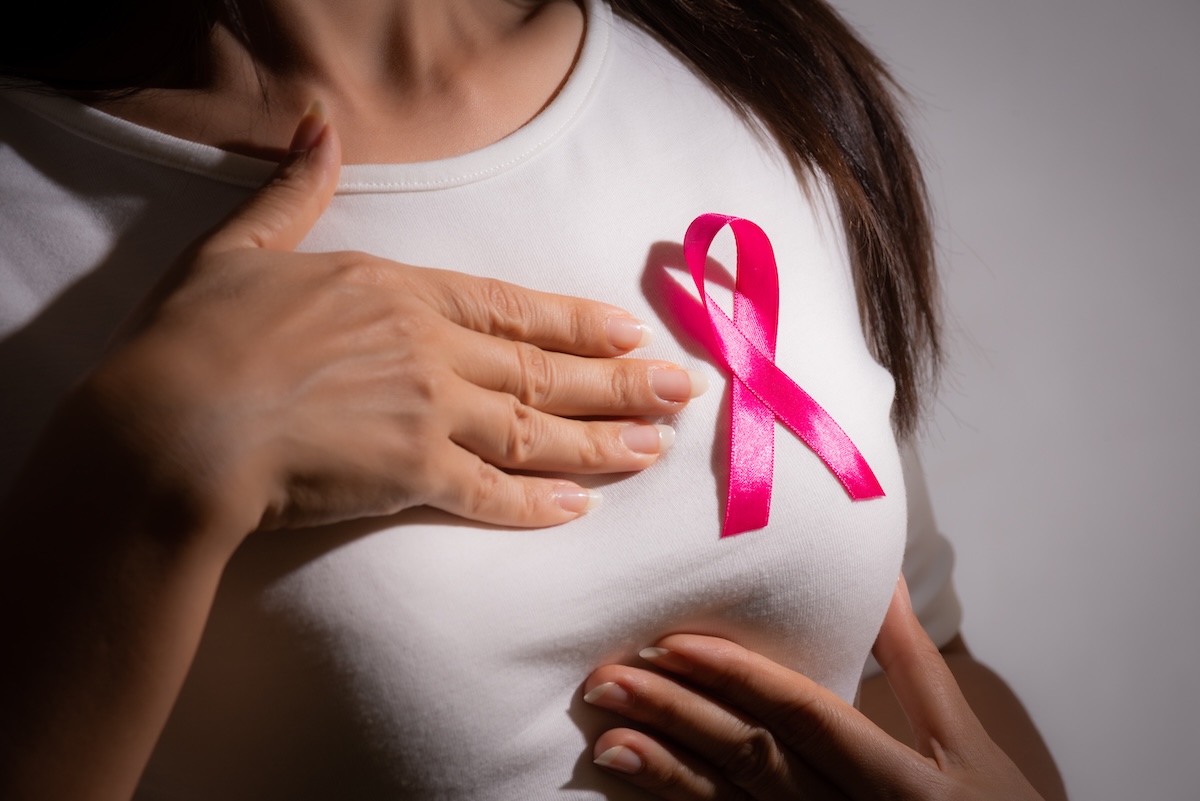Breast cancer is one of the most common cancers affecting women in the United States, though it can also affect men. It starts when cells in the breast grow in an uncontrolled way and form a lump or mass, known as a tumor. Not all lumps are cancerous, but when they are, they can spread to other parts of the body if not caught and treated early.

Even though breast cancer is a serious disease, many people survive it—especially when it’s found early. Thanks to regular screenings, better treatment options, and increased awareness, outcomes have improved for many patients over the years.
In this article, we’ll look at what breast cancer is, what causes it, the different types, common symptoms, how it’s diagnosed, and what treatments are available.
What Is Breast Cancer?
Your breasts are made up of fatty tissue, milk ducts, and glands. Breast cancer begins when cells inside this tissue grow abnormally. These cancer cells can form a tumor, which may be felt as a lump or seen on a mammogram.
Some breast cancers grow slowly, while others spread more quickly. Over time, cancer can move to nearby areas like the lymph nodes under your arm, and from there to other parts of the body such as the bones, liver, or lungs.
Breast cancer usually begins in the ducts (which carry milk to the nipple) or in the lobules (glands that produce milk). Depending on where it starts and how aggressive it is, the treatment and outlook can vary from person to person.
Causes and Different Types
Doctors don’t know the exact cause of breast cancer, but they do know that certain things can increase your risk. Some people have no clear risk factors, while others may have several. The most common risk factors include aging, family history of breast or ovarian cancer, inherited gene changes like BRCA1 or BRCA2, and hormone levels. Lifestyle factors such as smoking, drinking alcohol, not getting enough exercise, or being overweight after menopause can also raise the risk.
There are many types of breast cancer, but the most common include:
-
Ductal carcinoma in situ (DCIS), which is non-invasive and found only in the milk ducts. It hasn’t spread, and the chances of a full recovery are high.
-
Invasive ductal carcinoma (IDC), which starts in the milk ducts and spreads to surrounding breast tissue. This is the most common type of breast cancer.
-
Invasive lobular carcinoma (ILC), which begins in the milk-producing glands and spreads into nearby tissue.
-
Triple-negative breast cancer, a more aggressive form that doesn’t respond to hormone therapy or drugs targeting HER2 protein.
-
Inflammatory breast cancer, which is rare but grows quickly and makes the breast appear red, swollen, and warm.
Each type of breast cancer behaves differently and may need a different treatment approach.
Signs and Symptoms to Watch For
The most common sign of breast cancer is a new lump in the breast or underarm area. These lumps are often hard and painless, but some may feel tender. It’s important to remember that not all lumps are cancerous—many are benign and don’t pose a threat.
Other possible symptoms include changes in breast size or shape, dimpling or puckering of the skin, nipple discharge (especially if it’s bloody), a nipple that turns inward, and red or flaky skin on the breast or nipple. In some cases, the skin may look thickened or have a texture like an orange peel.
If you notice any of these changes, it’s important to talk to your doctor. Many breast cancers are found through routine screening, but others are discovered because a person noticed something unusual.
How Breast Cancer Is Diagnosed
If your doctor suspects breast cancer, they will usually begin with a physical exam and ask about your medical history. The next step is often a mammogram, which is an X-ray of the breast. This can help spot abnormal areas that may need further testing.
An ultrasound or MRI may also be used to get a closer look. If something suspicious is found, your doctor may recommend a biopsy, where a small sample of tissue is removed and examined under a microscope to check for cancer cells.
Once a diagnosis is confirmed, your doctor may order more tests to see if the cancer has spread. This is called staging, and it helps guide your treatment plan. The stage of cancer is based on the size of the tumor, whether it has spread to nearby lymph nodes, and whether it has moved to other parts of the body.
Treatment Options for Breast Cancer
There are several treatment options for breast cancer, and the best choice depends on the type, stage, and individual health factors. Many patients receive a combination of treatments to increase the chances of success.
Surgery is often the first step. In some cases, only the tumor and surrounding tissue are removed (called a lumpectomy). In other cases, the entire breast may need to be removed (mastectomy), especially if the cancer is more widespread.
Radiation therapy uses high-energy rays to kill cancer cells. It’s often given after surgery to destroy any remaining cancer cells and lower the risk of recurrence.
Chemotherapy involves drugs that kill cancer cells or stop them from growing. It’s often used before or after surgery, especially if the cancer is aggressive or has spread.
Hormone therapy is used if the cancer is sensitive to hormones like estrogen or progesterone. These treatments block hormones or lower their levels to prevent the cancer from growing.
Targeted therapy uses drugs that specifically attack certain features of cancer cells, such as the HER2 protein. These treatments tend to have fewer side effects than traditional chemotherapy.
Immunotherapy, though less common for breast cancer, may be used in specific cases to help the immune system fight cancer more effectively.
